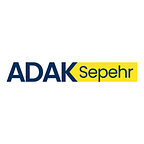Zero to one hundred ATEX standards in the simplest possible language!
What do ATEX zones include?
There are three criteria for zone classification in ATEX standard; How much the explosive agent is present in the environment, whether the intended environment is a mine or a non-mineral environment, and whether the explosive agent is gas or dust. Based on these criteria, each of these zones has its own code. As the number of each code increases, the amount of environmental risk decreases.
In the Atex standard, three numbers 0, 1 and 2 are used for industrial environments where the explosive substance is a gas. On the other hand, environments where dust is present as an explosive substance are represented by three numbers 20, 21 and 22.
It is interesting to know that because in mineral environments, gases and dust are present at the same time, this division generally does not exist. Instead, two codes M1 and M2 are used for mines.
By definition, zone 20 is exactly equivalent to zone 0, 21 is equivalent to 1 and 22 is equivalent to zone 2. As mentioned, the only difference is that numbers 20, 21 and 22 are related to dust and 0, 1 and 2 are related to gases. But what determines whether a zone is 0 or 2?
Zone 2 for gases and 22 for dusts is the least dangerous classified environment. In general, zone 2 refers to an environment where the accumulation of explosive material is not expected to occur naturally. Even if there is an accumulation, the duration of the substance’s presence in the environment is very short and it will be removed quickly.
Zone 1 and 21 are environments that have a higher risk. If there is a possibility of accumulation of explosive material in an environment during normal routines, the classification of these environments will be 1 for gases and 21 for dusts. But we haven’t reached the most dangerous zone yet!
The most sensitive zone considered in ATEX standard is Zone 0 for gases and Zone 20 for dusts. In these environments, a substance that is dangerous in terms of explosion is continuously present. Regarding the equipment used in these zones, utmost care and safety should be considered; Because the smallest negligence can lead to a disaster.
Now that we are fully familiar with the zones, it is time to learn to read the codes to know which equipment is suitable for which zone.
Learning how to read ATEX code in simple language!
All equipment that has ATEX approval has a special code that indicates which zones the equipment can be used in. Of course, reading and interpreting this code can be difficult for many people, even professionals. In this section, we will teach you how to read ATEX code in the simplest possible way.
First of all, it is better to know that all ATEX approval codes start with the word Ex inside a hexagon. Also, this Ex is repeated once more in the middle of the code.
In this section, in order to be able to check the code in a simpler way, we divide it into two parts: Ex prefixes and Ex suffixes. In the picture below, you can see the meaning more easily.
Checking the prefixes of the ATEX verification code
Depending on the type of approval, each code can include two or three prefixes. For mines where gas and dust are not separate, the prefix has two parts and for other environments three parts. We examine these items in this section.
Suitable for mines or other industrial environments?
At the very beginning of the ATEX code, two symbols I and II indicate whether the standard is suitable for mines or other industrial environments. If you come across I at the beginning of the ATEX code, it means the standard for mining and if you see II, it means that this approval is issued for non-mining industrial environments.
The second part of the ATEX prefix; Which category does the equipment belong to?
Equipment that receives ATEX approval is generally divided into 5 categories. These categories show that, in general, the equipment is suitable for which zones. Atex categories are indicated by M1 and M2 for mineral environments and numbers 1, 2 and 3 for non-mineral environments.
As mentioned before, with the increase of the corresponding number, the risk present in the zone also decreases. Therefore, the number 1 in this section of the ATEX code indicates the equipment that is suitable for zone 0; While the number 3 indicates the appropriate equipment for zone 2.
Finally, one of the two letters G or D is written next to these signs. The letter G is derived from the first letter of gas, which indicates that this standard was obtained for safety against explosive gases.
The letter D has been removed from the beginning of Dust meaning dust, which shows that the safety standard of this equipment is related to dust. Of course, as you know, there will be no such word in the approval code related to mines.
